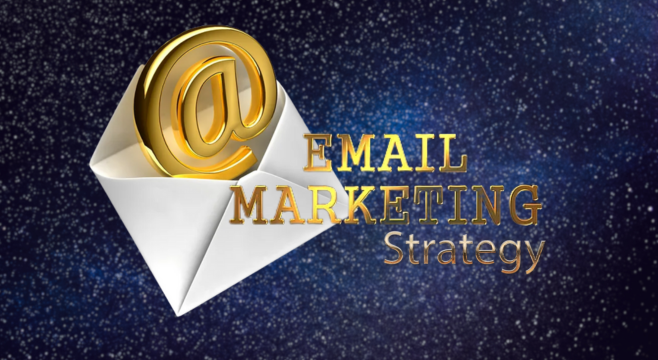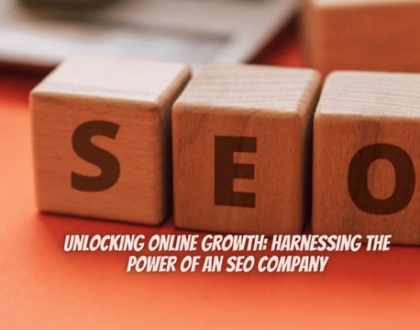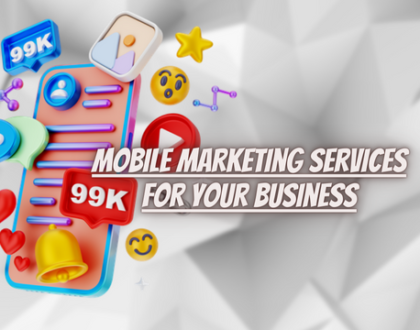Boost Your Email Marketing Strategy with These Proven Tips and Tricks

by RNRInc
Revamp Your Email Marketing Strategy: Tips and Tricks for Success
Email marketing is a powerful tool that can help businesses reach their target audience and drive conversions. However, with so many emails flooding inboxes every day, it can be challenging to stand out from the crowd. That’s why it’s essential to revamp your email marketing strategy and ensure that your emails are engaging, relevant, and valuable to your subscribers. In this article, we’ll share some tips and tricks that can help you take your email marketing to the next level. From crafting compelling subject lines to segmenting your audience and personalizing your messages, we’ll cover all the essential elements that can make your email campaigns a success. Whether you’re new to email marketing or looking to improve your existing strategy, these insights will help you connect with your audience, build trust, and drive more sales. So, let’s dive in and explore the world of email marketing
Importance of revamping your email marketing strategy
Email marketing is not a one-and-done strategy. It requires ongoing optimization and improvement to stay relevant and effective. Revamping your email marketing strategy can help you improve your open rates, click-through rates, and conversion rates. It can also help you avoid common mistakes that can hurt your email deliverability and reputation. When you revamp your email marketing strategy, you’re not just making cosmetic changes to your emails; you’re rethinking your entire approach to email marketing. You’re considering your audience’s needs and preferences, your business goals, and the latest trends and best practices in email marketing.
Revamping your email marketing strategy can also help you stay ahead of the competition. With so many businesses using email marketing, it’s crucial to differentiate your brand and offer something unique and valuable to your subscribers. By revamping your email marketing strategy, you can discover new ways to engage your audience, provide personalized experiences, and deliver relevant content that resonates with your subscribers.
Common mistakes to avoid in email marketing
Before we dive into the tips and tricks for revamping your email marketing strategy, it’s essential to understand the common mistakes that businesses make in email marketing. Avoiding these mistakes can help you improve your email deliverability, engagement, and conversions.
One of the most common mistakes in email marketing is sending too many emails. Bombarding your subscribers with too many emails can lead to email fatigue and cause them to unsubscribe or mark your emails as spam. Instead, focus on sending relevant and valuable content that meets your subscribers’ needs and preferences.br/>br/>
Another common mistake is not segmenting your audience. Your subscribers have different interests, behaviors, and preferences, and sending the same message to everyone on your list may not be effective. By segmenting your audience, you can send targeted messages that are more likely to resonate with your subscribers and drive conversions.
Poor email design is another common mistake in email marketing. Your emails should be visually appealing, easy to read, and mobile-responsive. Poorly designed emails can lead to low engagement and high unsubscribe rates.
Email marketing statistics
Before we delve into the tips and tricks for revamping your email marketing strategy, let’s take a look at some email marketing statistics that highlight the importance of email marketing and the opportunities it presents.
According to a study by Litmus, the average email open rate across all industries is 22.1%, and the average click-through rate is 2.6%. However, these rates vary by industry, with some industries seeing much higher open and click-through rates than others. For example, the nonprofit industry has an average open rate of 25.4%, while the travel industry has an average open rate of 20.69%.
Personalization is also crucial in email marketing, with personalized emails having a 29% higher open rate and 41% higher click-through rate than non-personalized emails. Another study found that segmented emails have a 14.32% higher open rate and a 100.95% higher click-through rate than non-segmented emails.
Understanding your audience for effective email marketing
Effective email marketing starts with understanding your audience. You need to know who your subscribers are, what they care about, and what motivates them to take action. By understanding your audience, you can create targeted messages that resonate with them and drive conversions.
One way to understand your audience is by creating buyer personas. A buyer persona is a fictional representation of your ideal customer that includes demographics, interests, behaviors, and pain points. By creating buyer personas, you can tailor your email marketing messages to specific segments of your audience and provide personalized experiences that meet their needs.
Another way to understand your audience is by analyzing your email marketing data. You can use analytics tools to track your open rates, click-through rates, conversion rates, and other metrics to gain insights into your audience’s behavior and preferences. For example, if you notice that your subscribers are not opening your emails, you may need to improve your subject lines or send your emails at a different time.
Crafting compelling subject lines and email content
The subject line is the first thing your subscribers see when they receive your email, and it can make or break your email’s success. A compelling subject line can entice your subscribers to open your email and engage with your content. On the other hand, a boring or misleading subject line can lead to low open rates and hurt your email deliverability.
To craft compelling subject lines, you need to understand your audience’s needs and preferences. You should also use power words and emotional triggers that evoke curiosity, urgency, or excitement. Some examples of power words include “limited time,” “exclusive,” “free,” and “new.
Once you’ve enticed your subscribers to open your email, you need to deliver valuable and relevant content that meets their expectations. Your content should be easy to read, visually appealing, and mobile-responsive. You should also use a clear call-to-action that tells your subscribers what you want them to do next.
Designing visually appealing emails
Design is an essential element of email marketing. Your emails should be visually appealing, easy to read, and mobile-responsive. A well-designed email can increase engagement, improve conversions, and build trust with your subscribers.
When designing your emails, you should use a clean and simple layout that highlights your content and makes it easy to scan. You should also use colors and images that reflect your brand and evoke emotions that resonate with your subscribers. For example, if you’re promoting a sale, you may use red or orange to create a sense of urgency.
Mobile responsiveness is also crucial in email design. With more than half of all emails opened on mobile devices, your emails should be optimized for smaller screens and touch interactions. You should use a responsive email template that adjusts to different screen sizes and test your emails on multiple devices to ensure they look great on all screens.
Email segmentation and personalization
Email segmentation and personalization are key to effective email marketing. By segmenting your audience and personalizing your messages, you can deliver targeted messages that are more likely to resonate with your subscribers and drive conversions.
Segmenting your audience involves dividing your email list into smaller groups based on demographics, interests, behaviors, or other criteria. You can then send targeted messages to each segment that address their specific needs and preferences. For example, if you sell clothing, you may send different messages to men and women or to customers who have purchased specific products.
Personalization involves using your subscribers’ data to create personalized experiences that reflect their interests and behaviors. You can personalize your emails by including your subscribers’ name, location, past purchases, or other data in your messages. Personalized emails have been shown to have higher open and click-through rates than non-personalized emails.
Automating your email campaigns
Email automation can help you save time and improve your email marketing performance. With email automation, you can send targeted messages to your subscribers based on their behavior, interests, or other criteria. For example, you can send a welcome email to new subscribers, a follow-up email to customers who have abandoned their cart, or a re-engagement email to subscribers who have not opened your emails in a while.
Email automation can also help you nurture your leads and build relationships with your subscribers. By sending timely and relevant messages, you can keep your subscribers engaged and build trust with them over time. You can also use email automation to cross-sell or upsell products and services to your existing customers, increasing your revenue and customer lifetime value.
Measuring the success of your email marketing strategy
Measuring the success of your email marketing strategy is essential to improving your performance over time. You should track your open rates, click-through rates, conversion rates, and other metrics to gain insights into your audience’s behavior and preferences. You can use analytics tools to track your email marketing performance and identify areas for improvement.
You should also A/B test your emails to see what works best for your audience. A/B testing involves sending two versions of your email to a small segment of your audience and measuring the results. You can then send the winning version to the rest of your audience and improve your email marketing performance over time.
Tips for optimizing your email marketing strategy
To optimize your email marketing strategy, you should focus on providing value to your subscribers. You should send relevant and engaging content that meets your subscribers’ needs and preferences. You should also use segmentation and personalization to deliver targeted messages that resonate with your audience.
Another tip for optimizing your email marketing strategy is to keep your emails short and to the point. Your subscribers are busy, and they don’t have time to read long and complex emails. You should use a clear and concise language that is easy to understand and get your message across in just a few paragraphs.
Finally, you should test and optimize your emails regularly to improve your performance over time. You should A/B test your subject lines, content, and calls-to-action to see what works best for your audience. You should also analyze your email marketing data and adjust your strategy based on your findings.
Conclusion
Revamping your email marketing strategy can help you improve your email deliverability, engagement, and conversions. By understanding your audience, crafting compelling subject lines and email content, designing visually appealing emails, segmenting and personalizing your messages, automating your email campaigns, measuring your success, and optimizing your strategy, you can take your email marketing to the next level and achieve your business goals. So, start revamping your email marketing strategy today and see the results for yourself



